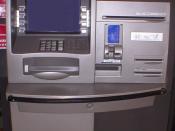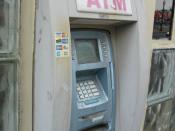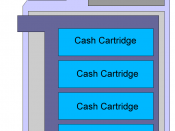1. Electronic/Tele Banking
1.1. Overview of Electronic/Tele Banking
From a general perspective electronic/Tele banking means the ability to have 24-hour access to the bank either through web based services, mobile services such as SMS banking or simply be able to transact through an automated teller machine (ATM).
Electronic/Tele banking, also known as Electronic Fund Transfer or Electronic Financial Telecommunication, uses computer and electronic technology as a substitute for checks and other paper transactions and are initiated through devices like cards or codes that let you access the banks services. Many financial institutions use plastic cards (ATM cards, Debit cards, Credit cards or smart cards) and Personal Identification Numbers (PINs) for this purpose while phones make use of codes and PINs for transactions.
Examples of Electronic Banking Services
Automated Teller Machines or 24-hour Tellers are electronic terminals that let you bank almost any time to withdraw cash, make deposits, or transfer funds between accounts.
Today it is common to see banks providing ATM services to other bank customers by charging a premium from the customer for such transactions.
Direct Debits lets you authorize specific direct withdrawals so that recurring bills, such as insurance premiums, mortgages, and utility bills, are paid automatically.
Personal Computer Banking also known as home banking lets you handle many banking transactions via your personal computer. For instance, you may use your computer to view your account balance, request transfers between accounts, and pay bills electronically.
Point-of-Sale Transfers (POS Terminal Transfers) let you pay for purchases with a Debit Card, which also may be your ATM card. The process is similar to using a credit card, with some important exceptions. While the process is fast and easy, a debit card purchase transfers money - fairly quickly - from your bank account to the store's account. So it's...


